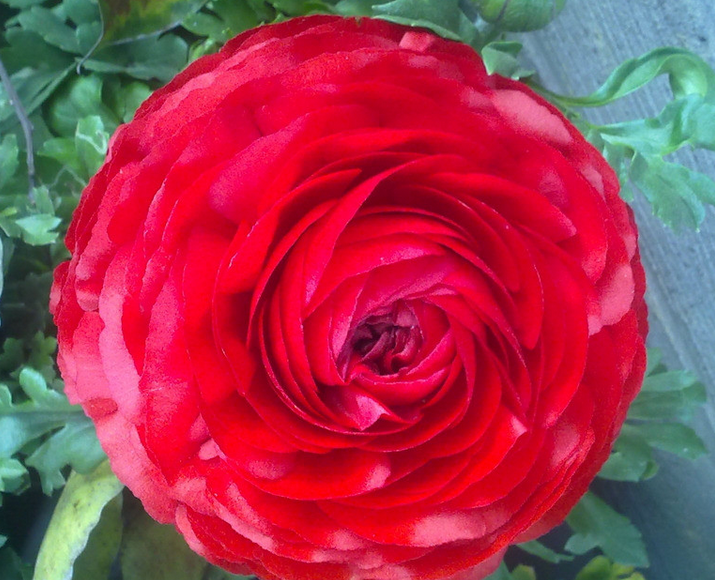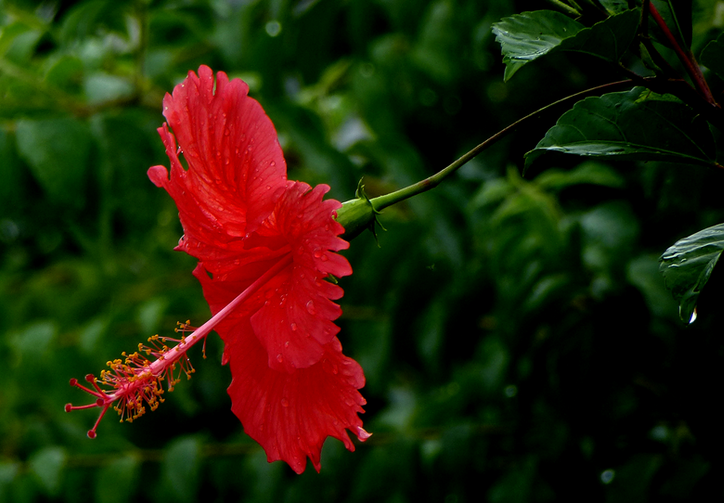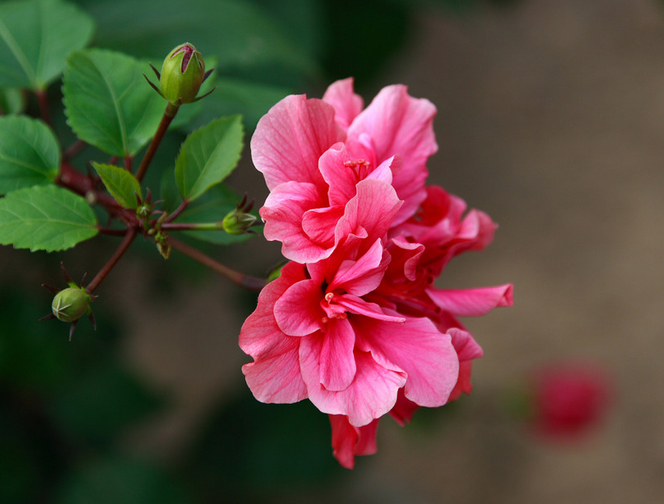Analysis of Culture methods and matters needing attention of celery Leaf Peony
Celery leaf peony gets its name because its leaves are more like celery. Many people want to raise celery leaf peony, but they don't know how to do it. So what should be done when raising celery leaves and peonies? Are there any methods and precautions? Next, let's learn more about it with the editor of the decoration network.

Analysis of Culture methods and matters needing attention of celery Leaf Peony
Culture methods of celery leaf peony
1. Growth habits
Celery peony like cool and ventilated environment, require semi-shade; more cold-resistant, poor growth in high-temperature and high-humidity environment; summer dormancy. It is suitable for growing in fertile and loose sandy loam.
2. Lighting management
Celery leaf peony is not tolerant to strong light, prefer semi-shaded environment, and should have sufficient light in winter. With the increase of air temperature and light in spring, appropriate shading and ventilation should be strengthened. Celery leaf peony is a relatively long sunshine plant, so long sunshine conditions can promote flower bud differentiation, early flowering, early termination of vegetative growth and early formation of bulbs. Under the condition of short day light, the florescence was delayed, but it could promote multiple lateral buds, increase crown width, increase flower quantity and further improve the quality of potted flowers. In production, long and short days should be regulated according to the actual demand in order to achieve the purpose of advance or postponement of flowering.
3. Water management
Celery peony likes to be wet and afraid of waterlogging and is more tolerant to drought, but it is not suitable for excessive drought, especially in the later growth stage, the excessive drought will lead to the forced dormancy of buttercup, which will lead to the deterioration of bulb quality. After planting, the first time to water enough, and then watering should be timely, and pay attention to balance, and do not be too dry and wet. The watering degree should be that the soil surface is dry and the leaves do not wilt.
4. Fertilizer management
Before planting celery leaf peony, organic fertilizer such as rotten cake fertilizer or animal manure should be selected as base fertilizer and spread evenly. After transplanting, topdressing begins when the plant grows obviously or grows new leaves, and the fertilization concentration is 0.1% at the initial stage and 0.15% / 0.2% at the later stage. 46% urea and 45% water-soluble compound fertilizer are used alternately. Urea was the main fertilizer in the early stage and compound fertilizer in the later stage, which was applied once every 7 days. Compound fertilizer containing nitrate nitrogen is used as far as possible in winter, while compound fertilizer containing chlorine is not suitable. Liquid fertilizer dominated by potassium was applied twice after anthesis to promote bulb enlargement.
5. Temperature management
Celery leaf peony prefers cold environment, and the optimum growth temperature is 15: 20 ℃ in daytime and 7: 8 ℃ at night. The temperature should not be too high or too low, and the temperature difference between day and night should not be too large, otherwise the growth and development of celery leaf peony will be affected, resulting in the decline of the number and quality of flowers. In the process of production, the maximum temperature in the plastic greenhouse should not be higher than 22 ℃ and the lowest temperature should not be lower than 0 ℃. Generally, the growth is better with one-layer greenhouse in winter, and the normal temperature management can be carried out when the heart leaves grow obviously after planting.
6. Florescence management
Celery leaf peony should pay attention to adjust the temperature in the greenhouse to 15 ℃ after flowering in order to prolong the flowering period. Residual flowers and diseased plants should be sorted out in time. Watering should be balanced so as not to get too dry and wet.
Matters needing attention in culturing celery leaves and peonies
Celery peony likes to be wet and afraid of waterlogging and is more tolerant to drought, but it is not suitable for excessive drought, especially in the later growth stage, the excessive drought will lead to the forced dormancy of buttercup, which will lead to the deterioration of bulb quality.
Generally speaking, the florescence of celery leaf peony is around April, and most flower friends start at this time, but with the rise of temperature, celery leaf peony begins to wither in June, which is normal, because celery leaf peony is dormant in summer, at this time, cut off the dead stems and leaves above ground, put celery leaf peony in a cool and ventilated place, keep the soil a little dry, but not very dry. Occasionally, you can give a little water along the edge of the basin until the root is knocked out in autumn and replanted.
How to cultivate peony culture methods and matters needing attention
The peony flowers are colorful and very ornamental. Placing them indoors can add color to our environment. So, how should we raise peonies? Next, I will tell you about the methods of peony culture and matters needing attention.
Peony culture method
1. Soil quality: peony is suitable for loose, fertile and deep soil. The drainage capacity of soil must be good. Pot culture can be used in general culture soil, the soil pH value is neutral, micro-acid or micro-alkali can also be used.
2. Temperature: peony is cold-resistant and can not bear high temperature. In both eastern and central China, the flower buds began to expand gradually when the winter temperature reached 4 ℃. The suitable temperature is 16-20 ℃, and it will not blossom below 16 ℃. At high temperatures in summer, plants are semi-dormant.
3. Illumination: Yin camellias, Yang peonies. Peonies like the sun, but they don't like the sun. When planting, you need to choose a higher eastward sunny place, and the potted plants should be placed on a sunny eastward balcony, such as a south balcony or roof platform, and shade in the west.
4. Planting: peony is a kind of deep-rooted flowers and trees, deep ploughing should be carried out before planting, and base fertilizer should be applied (such as bone powder, cruller, chicken manure, etc.).
5. Watering: peony should not be watered much, and it is generally not watered in winter. After May, the weather is getting hotter and hotter. If the dry land is dry, it can be watered appropriately, but it should be dry rather than wet. Only after the soil is dry can it be watered.
6. Fertilization: it is best to apply fertilizer three times a year, the first time in the new shoot, when the leaves and buds are stretching, mainly by applying quick-acting fertilizer; the second time after flower fade, it is still dominated by available fertilizer; the third time in autumn and winter, mainly by base fertilizer.
7. Pruning and pruning: cut off the remaining flowers after the flowers have faded. In order to make the crown low and flowers dense, it can be pruned before July to avoid the influence of dense branches on flowering. It is appropriate to leave 5-6 main branches per plant.
Matters needing attention in peony culture
1. The most suitable season for peony planting
Potted peony is recommended to be cultivated from September to October. For family farming, Luoyang Red, Hu Hong and other varieties are recommended. They are more adaptable to the environment. Peony can also be propagated by sowing, but it takes 4-5 years to blossom through sowing and breeding.
2. The florescence of peony
The flowering period of peony is from April to May every year. If the cultivation is good, the normal flowering period is about 105 days, and some of the time is longer. Of course, temperature and climate will affect the flowering period of peonies. When peonies bloom, they can be covered in a shed or temporarily placed indoors to avoid direct sunlight, which can prolong the flowering period. The terminal buds of the main branches are leaf buds, so they should be removed so as not to grow too long and affect flowering.
3. Post-flowering management
After the flower fade, the flowers and pruning should be removed in time, and at the same time, the wound should be protected by healing and anticorrosive film at the pruning mouth to prevent bacteria from invading and infection. If the plant is low and the flowers are dense, it should be shorter and heavier in order to inhibit the expansion of branches and the occurrence of root tillers, generally 5-6 branches should be retained per plant.
4. Growth habits of peony.
Generally speaking, southern peonies should pay special attention to temperature and light, because peonies are deep-rooted flowers, which are sunny, cold-resistant, and prefer a cool environment, which is suitable for growing in loose, fertile and well-drained sandy soil.
Because the root of peony is longer and the plant is larger, it is suitable for planting on the ground. if you want to pot, you should choose a large, permeable tile basin with a depth of more than 30 cm. It is best to use a tile cylinder with a depth of 60-70 cm.
The weather in the south is dry and hot, so when it is hot in summer, it is necessary to prevent peony flowers from being exposed to the sun and take timely cooling measures. Some flower friends respond to the fact that the peony flowers planted do not blossom. As a reminder, if the temperature is not properly controlled and the leaves fall, it will seriously affect the future flowering.
5. Rotten root problem
Peony rotting root problem is mostly caused by watering, rainy season to timely drainage, there can be no stagnant water, to move indoors. In the high temperature season, it is usually about 10 days to water once.
Fertilizer should not be applied too frequently, it can be done 3 times a year with 2 murals. When the buds and leaves stretch in early March, you can apply fertilizer once in order to increase and increase the flowers; in late May, the flowers have just withered, and in order to supplement nutrients, you can apply fertilizer once. Stop watering before applying. At the same time, you should be careful not to splash the fat on the branches and leaves. If you have already touched it, rinse it with clean water.
The above is the introduction of peony breeding methods and matters needing attention, I hope it can help you, more household knowledge, please pay attention.
How to raise peony culture methods and matters needing attention
The flowers of peony are gorgeous, elegant and fragrant, so they are valuable flowers with ornamental value. Many people want to breed, but how to raise peonies? Today, I would like to introduce the methods of peony culture and matters needing attention.
Peony culture method
1. Soil quality: peony is suitable for loose, fertile and deep soil. The drainage capacity of soil must be good. Pot culture can be used in general culture soil, the soil pH value is neutral, micro-acid or micro-alkali can also be used.
2. Temperature: peony is cold-resistant and can not bear high temperature. In both eastern and central China, the flower buds began to expand gradually when the winter temperature reached 4 ℃. The suitable temperature is 16-20 ℃, and it will not blossom below 16 ℃. At high temperatures in summer, plants are semi-dormant.
3. Illumination: Yin camellias, Yang peonies. Peonies like the sun, but they don't like the sun. When planting, you need to choose a higher eastward sunny place, and the potted plants should be placed on a sunny eastward balcony, such as a south balcony or roof platform, and shade in the west.
4. Planting: peony is a kind of deep-rooted flowers and trees, deep ploughing should be carried out before planting, and base fertilizer should be applied (such as bone powder, cruller, chicken manure, etc.).
5. Watering: peony should not be watered much, and it is generally not watered in winter. After May, the weather is getting hotter and hotter. If the dry land is dry, it can be watered appropriately, but it should be dry rather than wet. Only after the soil is dry can it be watered.
6. Fertilization: it is best to apply fertilizer three times a year, the first time in the new shoot, when the leaves and buds are stretching, mainly by applying quick-acting fertilizer; the second time after flower fade, it is still dominated by available fertilizer; the third time in autumn and winter, mainly by base fertilizer.
7. Pruning and pruning: cut off the remaining flowers after the flowers have faded. In order to make the crown low and flowers dense, it can be pruned before July to avoid the influence of dense branches on flowering. It is appropriate to leave 5-6 main branches per plant.
Matters needing attention in peony culture
1. Extensive management and simple maintenance. In addition to the strong light at noon in midsummer, adequate light should be given at other times of the year, especially in winter.
There is a large water demand in the peak growth period from February to September, so it is necessary to often water and spray to increase humidity, and gradually reduce the amount of water after autumn to improve the cold resistance of the plant.
3, like the semi-shady environment, if the light is too strong or insufficient in the place, the leaves will easily become light green or yellowish green, lack of vitality, lose their due ornamental value, or even die; such as direct sunlight, dry air, it is most likely to cause scorching, so it should be placed in a cool and ventilated place and pay attention to maintaining environmental humidity.
4. diseases and insect pests are not easy to occur, but if the basin soil is stagnant and poorly ventilated, it may not only lead to root rot, but also root rot, so attention should be paid to spraying prevention and control.
5. Put it in the ventilated position with sufficient scattered light, because winter is not the growing period of peony orchid, in order to prevent and cure the rotten root, watering must be thoroughly watered, depending on the situation.
- Prev

An Analysis of the Culture methods of Mulberry Leaf Peony to teach you to cultivate Mulberry Leaf Peony easily
Mulberry leaf peony is a famous flower in China, with large flowers and many colors, although it is ridiculed in the morning, but it is continuous, with a long flowering period and the most prosperous summer and autumn flowers, which is deeply loved by people. many people want to raise mulberry leaf peonies themselves, but they do not know how to raise them. Next, let's learn more about it with the editor of the decoration network.
- Next

Analysis of Culture methods of Mulberry Leaf Peony
Mulberry leaf peony is a famous flower in China, with large flowers and many colors. Although it is ridiculed in the morning, it goes on and on, with a long flowering period and the most blooming summer and autumn flowers. Many people want to raise mulberry leaf peonies on their own. Next, let's learn more about the cultivation methods of mulberry leaf peony with the editor of the decoration network.
Related
- Fuxing push coffee new agricultural production and marketing class: lack of small-scale processing plants
- Jujube rice field leisure farm deep ploughing Yilan for five years to create a space for organic food and play
- Nongyu Farm-A trial of organic papaya for brave women with advanced technology
- Four points for attention in the prevention and control of diseases and insect pests of edible fungi
- How to add nutrient solution to Edible Fungi
- Is there any good way to control edible fungus mites?
- Open Inoculation Technology of Edible Fungi
- Is there any clever way to use fertilizer for edible fungus in winter?
- What agents are used to kill the pathogens of edible fungi in the mushroom shed?
- Rapid drying of Edible Fungi

